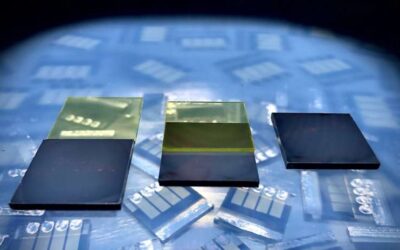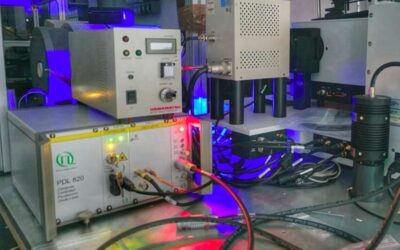Over the past few decades, researchers have developed increasingly advanced technologies that convert natural sources into electrical energy through the use of solar cells and wind turbines. Recently, the wind energy industry has been expanding rapidly, with a growing...
Energy & Green Tech
A method to track the outdoor performance of perovskite solar minimodules
In recent years, researchers have been developing a wide range of technologies designed to convert renewable energy sources, such as sunlight and wind, into electrical energy. This includes solar or photovoltaic (PV) cells, devices that can convert light into...
A strategy to improve the efficiency and long-term stability of perovskite solar cells
Over the past few years, researchers have been trying to develop new designs for perovskite solar cells that could improve their performance, efficiency and stability over time. One possible way of achieving this is to combine 2-D and 3-D halide perovskites in order...
New 2-D Ruddlesden-Popper (RP) layered perovskite-based solar cells
In recent years, researchers worldwide have been trying to develop solar cells and other technologies that can produce electrical energy from renewable sources, as these could reduce the emission of greenhouse gases and thus help to preserve life on our planet. Solar...
A strategy to transform the structure of metal-organic framework electrocatalysts
The oxygen evolution reaction (OER) is a chemical process that leads to the generation of molecular oxygen. This reaction is of key importance for the development of clean energy technologies, including water electrolyzers, regenerative fuel cells and rechargeable...
A pocket cooling device based on a cascade mechanism
Recent technological advances have enabled the development of increasingly compact and flexible devices. This includes wearable or portable technology, such as smart watches, earphones or other smart accessories, which can assist human users in a variety of ways.
A home energy management system to achieve optimal control of heat pumps and photovoltaics
Over the past few decades, researchers worldwide have developed a growing amount of systems that can produce renewable energy, such as solar, wind or hydroelectric energy. While some companies and individuals have already started adopting these technologies, a...
Study uncovers the role of exciton lifetimes in enabling highly efficient organic solar cells
Organic photovoltaics are a third-generation solar cell technology made of electron donor and electron acceptor materials instead of conventional semiconductor p-n junctions. The performance of this alternative solar cell technology has improved significantly over the...
Commercial battery cells that can monitor their own chemical and thermal state
Battery technology can sometimes be unstable and volatile, two characteristics that impair its safety and reliability. Actively monitoring the chemical and thermal state of battery cells over time could help to detect changes that may cause incidents or malfunctions,...
Reviewing recent efforts to improve the reversibility of zinc anodes in rechargeable batteries
Rechargeable zinc metal batteries (RZMBs) could be a viable alternative to lithium ion batteries, which are currently used to power many types of electronic devices, as well as electric vehicles. Recent studies suggest that using optimized electrolytes could lead to...










